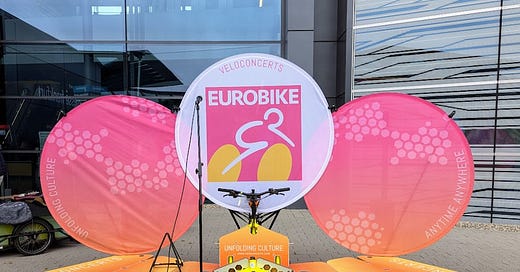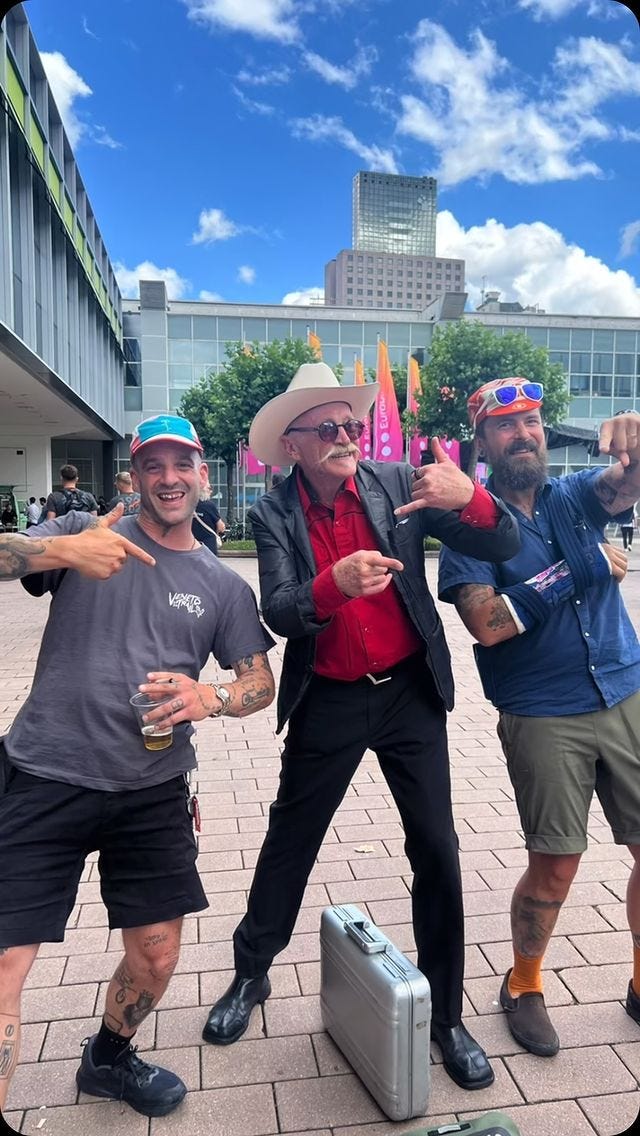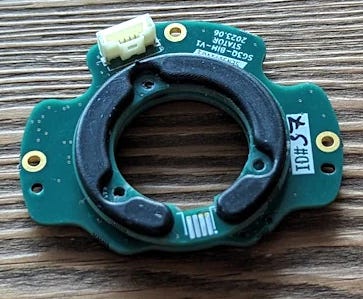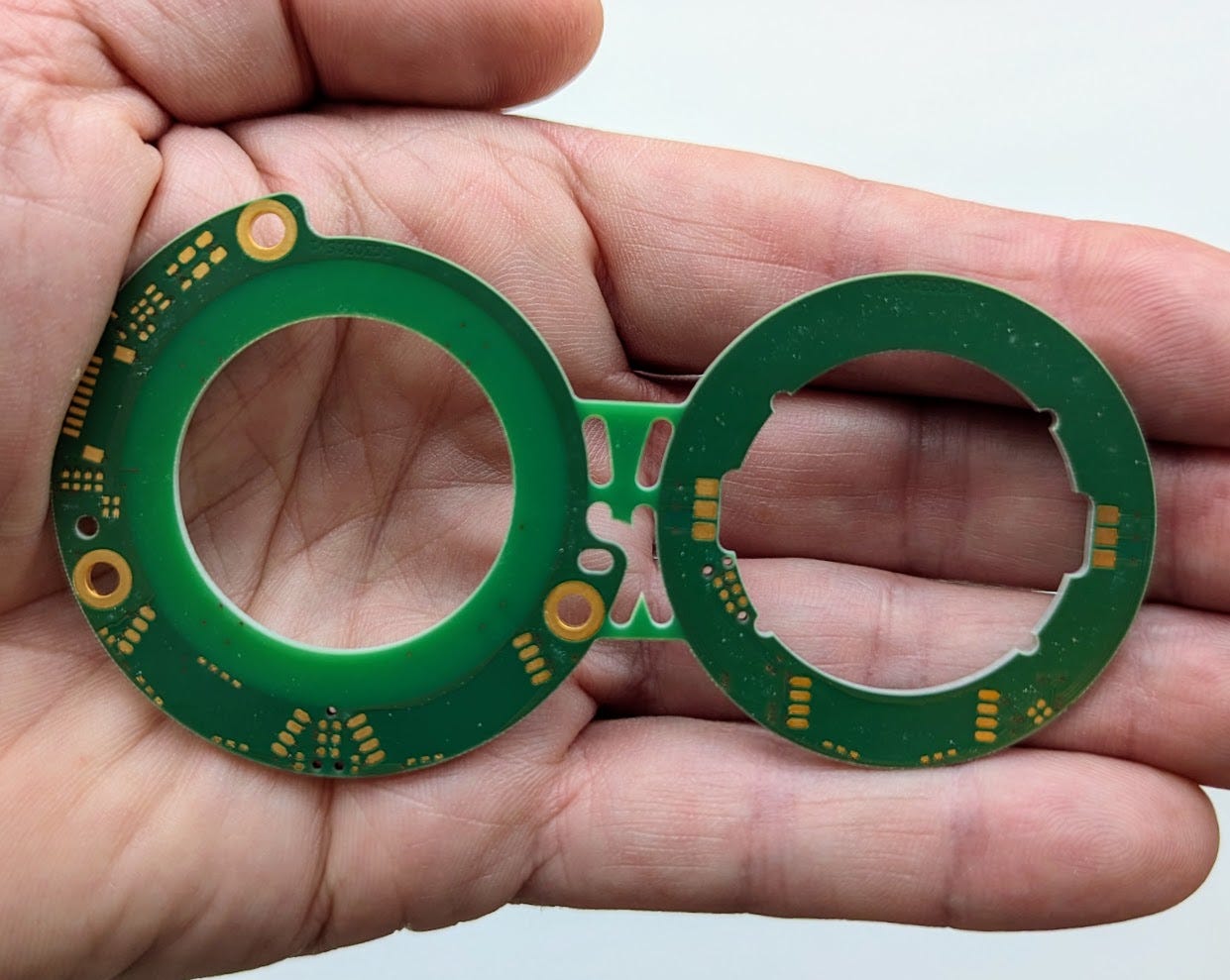Eurobike 2024 was a blast - and here are some of my reflections and observations. First on the status of the bike business:
The drop back to normal from the two golden COVID years still affects parts of the business due to overstocking. Basically, it's hybris triggered by greed and bad planning. Still very real, though.
Many see light at the end of the overstocking tunnel. That is good. Some were not really impacted because their business was based on shorter supply chains. That is even better.
The “new products drive sales” mantra is still on full display. Embarrassing as it is. We want a better future - that does not mean we should F up the planet with “new products that drive sales”. Make products and real innovations that make sense - not to drive sales. We do not need one more valve-“standard”.
E-bikes are becoming more like cars. Displays, buttons, touch screens, lots of electronics. You do not need a dashboard for an e-bike. You need reliability, compatibility, and repairability for the next 10-20 years. This is still not in focus - at all.
The auto industry is all over e-bikes. But are incredibly slow. The electronics industry is outpacing them by a factor of 2-3x. Example: DJI bikes came out of the blue (prototypes last year and the big story this year).
On the event itself in the new home at Messecenter Frankfurt:
It felt a tiny bit smaller than last year. But plenty big enough with 1800 exhibitors.
The big ugly empty Hall 10 is still a silly mystery obstacle in the middle of everything. Having to run around Hall 10 maybe 6-7 times a day when going from meetings in Hall 8 and Hall 12 is just ridiculous. At least integrate it somehow in the show. Run the demo track through it - or something. #endofrant
For us - as a tiny company with a unique and next-level technology for lower cost and much better torque and angle/rpm sensing - this year felt like the perfect storm:
With business being slow and the end of the tunnel in sight, the bigger players were aware of the best thing to do in that situation: Invest in new innovation. One way or another. Never before have we had this many discussions at that level before. Watch this space for more about this.
Once again Eurobike proved worth going and we already decided to go again next year. Best show of the year. And overall best tradeshow in the many different industries I have been in.
I think our friends at TwoTone did a really good job of capturing some of the fun and odd stuff happening there:
And now you know why getting a new bike right now is still a smart move. Clearing out those last overstocked bikes can still land you amazing deals. But the end of that is in sight - at least that was my takeaway on that.
BIZ STUFF
The process of making and selling a technology that can be customized in many different shapes and forms and used for a lot of different applications has been quite “interesting”. While it is pretty obvious that a technology intended for high volume should be customized to the actual application to squeeze every last penny out of it, most customers are asking for “something to try out” first.
In the bike world, “to try” often means to put it on a bike and go on a ride. Imagine buying a tailor-made suit that way: “Can I get one to try? Just for a few events or parties. Then I come back and order. Oh, and can the one I try be a perfect fit also?” :)
Not saying that is a good analogy, but just to illustrate the challenges we have been facing with this over in Sensitivus.
By now we have (had to) come up with many ways a customer can “try it out”. Here are some of the ways you can try our unique torque/angle/rpm sensor technology. Many ways as customers are different and applications can be very different as the sensor can be used for e-bikes, robotics, medical, agriculture, and lots of other applications.
Design workshop
To make it easy to design a fully custom sensor without having to actually build anything physical, we developed a one-week online workshop to go through the needs of the application and design the crucial “torque sensing metal” together with the customer.
By performing the right types of 3D FEM simulations of this metal design, the performance of the final sensor is predicted so well that building a physical prototype is mostly for verification and other purposes.
Static setup
You can try everything in a static setup including most of the interface to the (motor) controller with this little guy (we call SG12):
We sell those off-the-shelf for €200.
Surprisingly enough this can actually tell you everything about how the performance is going to be for the torque sensing – if you are willing to make the test setups for static testing. From an engineering point of view, this is a good method as you can verify your 3D FEA simulations more or less 1:1.
Desktop setup
For an on-the-desk setup that includes the non-contact inductive link and angle sensor, we have this setup (SG30):
This can even go into a system/prototype if you want. I would however recommend (strongly) using it for on-the-desk testing first. Then do our torque-metal-design workshop to make the perfect torque-sensing-metal to install it on. This will also show if you need a different solution in your product.
This one has an inner diameter (ID) of 23mm.
Ready for prototyping - NEW
To offer yet another way to “try it out”, we have designed a set of "sensor baseboards” and some small sensor modules. Same sensor but with different inner diameters: 31mm, 41mm, and 51mm. Ready to build up as a prototype if that fits into your design.
This is yet another option.
Dynamometer setup
If your preferred test setup is a dyno (great YT video for a DIY dyno project here) - which many companies use as their primary test setup for torque (and rpm) - then the easiest path is this industrial sensor reference design (SG210):
These are a bit more expensive and made to order. This is, however, a really easy way to do all kinds of measurements - also on the inductive link performance. A sensor like this will plug directly into many dynamometer setups.
Inside this sensor is the SG30 shown earlier.
Full custom
We can also go full custom – that always starts with the torque sensing metal workshop (which is always recommended – we started doing those for a reason). This way we simply design a sensor prototype as close as possible to the final sensor.
If the project is high-volume or special in its requirements, this is also where it ends anyway. So in my mind, this is by far the fastest and most efficient way to do it.
Jump on a bike
We do not have a bike with the sensor on. But many customers have. As prototypes. And we are actually able to point to a customer where you can go try one of their prototype bikes with our sensor on. This has also been possible at a few Eurobike shows.
Why don’t we have a bike with our sensor on? Well, the time it takes for an e-bike motor to go from the design phase to actually being on bikes at a tradeshow (let alone in stores) is easily 5+ years. We only started doing these types of sensors a few years ago. So we cannot just point you to a bike at the local bike shop - yet.
And honestly, judging a sensor for torque/angle/rpm by riding a bike is maybe the most fun way to do it. But also far removed from good engineering practice as so many other factors play into how a bike feels.
Learnings
I hope this illustrates some of the business challenges you may have when your “product” is a new technology. We had to do a lot to make it possible to “try out” the sensor technology before starting a project with us.
Contrast this to consulting where I have spent many years in a previous venture. Making a new project that required a lot of innovation was often possible without any way to “try it out” first. In that type of business, this was always possible based on a set of specifications and a test plan. Similar to what I called “full custom” here. And if it was really innovative, we could do a feasibility study first to remove the biggest risks.
Is this difference mostly due to the “bike world” being this way? Or is it simply the nature of selling “customizable technology”?
FUN STUFF
Also from Eurobike - take a look at the small-wheel-trend according to Russ:
We met Russ and Laura at a party and had a really good time there.
With this… enjoy your summer.
I will be back with more on the other side :)
Rolf V. Ostergaard
- Sensitivus
- EE-Training
- Linkedin
P.S.
If you found this interesting there is more in the back issues. And if you found it boring, maybe the previous issues were more interesting for you:
Why angle to start should be law - and what I even mean by that
Why you should go to Sea Otter - and why you need a brake sensor if you want to go really fast downhill
Why you should do a Kickstarter - or actually, why you should not
Why you need a power meter - open source or not
Why hub motors are better - and how Miri may be just the writer/photographer you are looking for
Why you should ride a bike to work - maybe even an electric unicycle
Why you should buy a new bike now - and why you should know TwoTone :)
Thanks for reading along :)
[[ … AND LET’S KEEP UNF*KING THE PLANET - ONE EBIKE AT A TIME ]]









Thank you for the shout, Rolf! And for joining our dinner once again! : )